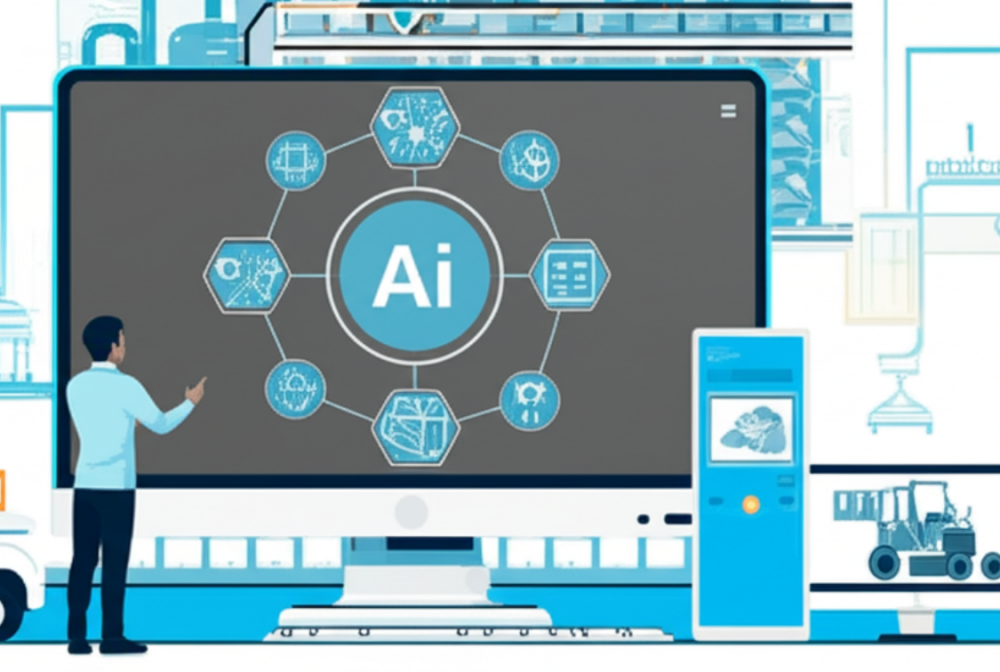As the entire globe has been pursuing digital transformation, acceptance for remote AI-powered video technologies has increased within the industrial sectors. The remote inspections via short videos are one of the more recent and hence innovative means where companies are allowed to keep an eye on infrastructure projects of a much larger scale without having to be present at the site. This cutting-edge way of remote inspection is cost-saving and hence endorsed by sustainability philosophies, which promote the cutting down of emissions generated through travel.
Rajat Khare, a venture capitalist, deep-tech investor, and founder of Boundary Holding, has thought through and commented on the evolutionary side of this technology. A venture capitalist with a strong inclination to AI, clean-tech, and MedTech, Khare has always supported start-ups seeking to balance innovation with real-world applications.
In this article, we explore the transformation of industries by AI video inspections, the bets of Rajat Khare and his company on these technologies, and the sustainability footprint of this new industry.
Rajat Khare and Boundary Holding’s Vision
His name is Rajat Khare, founder of Boundary Holding, an investment company of Luxembourg specializing in the deep-tech domain and disruptive innovations. IIT Delhi alumnus Khare has put his money into arenas as various as:
- Waste management technologies.
- MedTech startups.
- Clean energy and climate-conscious solutions.
Boundary Holding continues to emphasize investments that combine technological efficiency with the social good in the long run. This recognition given to AI-driven video inspections fits in well with the larger Khare vision of catalyzing the development of a scalable, future-proof solution.
Khare believes that industries across continents have just begun scratching the surface of what AI-assisted video analysis can do. As he says:
“We are still in the early days of the AI-powered video revolution. The ability to perform remote inspections will soon become a must-have for companies seeking operational excellence and climate-conscious operations."
Why AI-Powered Video Technology Matters
Videos are a universal medium of communication that can display far too much information compared to text or still images. When combined with AI, short video clips may support real-time infrastructure monitoring;
Quickly detect and analyze faults, often better than human inspectors; reduce dependence on on-site resources and manual scrutiny; and support decision-making through data-backed visual evidence.
This approach is gaining acceptance now in industries such as renewable energy, construction, manufacturing, and telecommunications.
Real-World Applications: Enel Green Power
One of the most striking examples is by Enel Green Power, an Italian multinational renewable energy corporation. Michele Ronco, a technology engineer at the company, uses short video inspections to oversee large-scale solar projects valued between $200 million and $400 million.
Always attaching short video clips to contractor data submissions ensured by Enel:
- Reliable verification of project data.
- Real-time quality checks without repeated travel.
- Faster identification of construction issues.
The system worked to help Enel redesign inspection strategies, reduce travel expenses, and create smoother communication between stakeholders.
Pioneers of AI Video-Driven Remote Inspections
In more than one company, the challenge is being undertaken, with many supported by foresighted investors such as Rajat Khare:
- Vyntelligence – Short video data capture and AI analysis for field operations.
- TechSee – Visual support platforms welcomed by AI; hence, worldwide telecom and utilities companies are their customers.
- Blitz – Construction and infrastructure; detects defects, alignment errors, and safety risks.
These companies illustrate how AI videos serve purposes in numerous industries, from telecom troubleshooting to renewable energy plant monitoring.
How AI Video Technology Works
Computer vision and machine learning are behind the technology foundation. The procedure includes:
According to Rob Klinge, communication is the key. AI embarking on inspections is a tool that improves efficiency and reduces carbon emissions. It is going to be resounding winners for businesses and the environment.
Why Investors Like Rajat Khare Are Betting on This
Investors want technologies that provide both profitability and long-term relevance. For Rajat Khare, AI-based inspections and the value ones gain from them come with on the premise that they:
Scale across industries.
Reduce costs to the enterprises.
Yield sustainability gains that appeal to regulators and downstream ESG-conscious investors.
This view reflects Boundary Holding's previous investments into deep-tech companies, and AI-powered video inspection technology fits perfectly into this portfolio.
Conclusion
The short video revolution, AI-powered, has been making those industries involved in inspection and data handling tremble. It reduces costs, improves accuracy, and supports sustainability, and hence is prepared to be the cornerstone for industrial monitoring for at least a decade.
Through Boundary Holding, Rajat Khare has always been backing startups that straddle the two worlds of technology and climate-conscious efficiency. His understanding of the weight of AI video sits right in a larger trend—where deep-tech investment is converging with global sustainability goals.
As for industries going smart and green, AI-driven remote inspections shall be established as operational standards all over the world.
Frequently Asked Questions
Q1. How does AI-powered short-video generation fit into remote inspections?
It actually records and analyzes in real time, video footage from remote sites, immediately detecting the potential for some issues without an on-site visit."
Q2. Which industries benefit the most from AI video inspections?
Prime sectors are renewable energy, construction, telecom, utilities, and large production manufacturing.
Q3. What are some environmental benefits attributed to AI video inspections?
It reduces the frequency of traveling, resulting in reducing carbon emissions and minimizing the environmental footprint on ordinary inspections.
Q4. Why is Rajat Khare investing in AI-driven video technology?
He sees this as an emergent revolution poised to combine operational efficiency, cost reduction, and sustainability-all of which are in alignment with Boundary Holding's deep-tech investment thesis.












